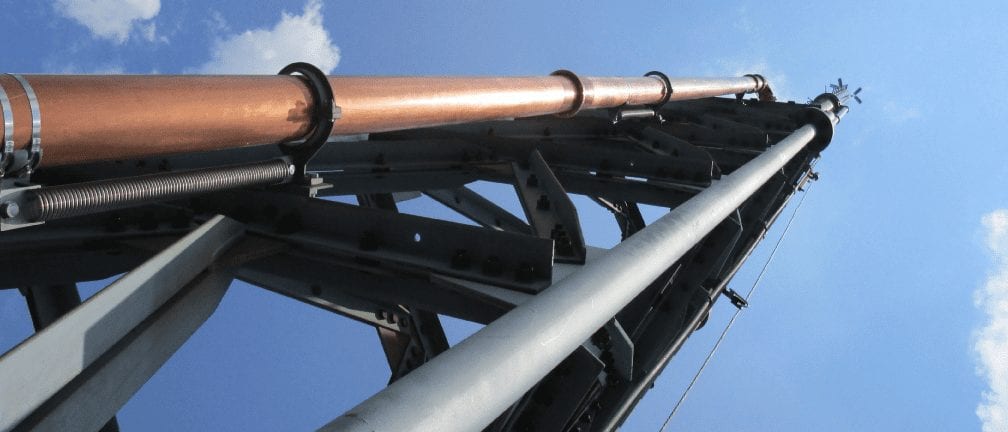mbrooke
Batteries Included
- Location
- United States
- Occupation
- Technician
Steal them from other sites and paste them. Go crazy!
Wait, you can do that?
Steal them from other sites and paste them. Go crazy!
No, I was just kidding.Wait, you can do that?
No, I was just kidding.
Sometimes, you have to post it as an image using its URL.
You can never forget cost...
Curiously enough, they call it "Flex" and also offer a line of rigid transmission line. It bolts together like high-pressure flanged steam pipe.Us hams call it Hardline


The pipe isn’t the problem or the driving factor for cost.Couldn't they keep cost down by direct burrying that cable? You know, 138kv URD?
The pipe isn’t the problem or the driving factor for cost.
Pipe is relatively cheap.
You don’t want to bury this type of wire 3’ deep and walk away.
Think.Why can't that be done? Burrying 6 feet and walking away?
Think.
basically your lifeline to several hundred thousand customers is installed without supplemental protection.
Someone digs, bores, or drills into it.
Your major asset is too unprotected. This isn’t an hour fix.
NC had a drill go through a line like this and it was in a sound. You would think no one would be anywhere close to it.
Took MONTHS to fix
Underground ... out of sight ... easily forgotten or misplaced.... NC had a drill go through a line like this and it was in a sound. You would think no one would be anywhere close to it. ... Took MONTHS to fix

I know you said "cost aside", but it's hard to get past the cost difference between underground and overhead. If you've ever done a cost estimation for a new MV utility feed where overhead vs underground was evaluated it is quite significant at times. Even for small and short MV services it can be tens of thousands of dollars for underground vs next to nothing for overhead.
I'd probably agree that outage frequencies may go down... but the duration of the outages when they do occur could go in the opposite direction, so your outage-hours could be relatively the same or worse. And now everything was just more expensive.
So now we're talking underground everywhere and everything networked or dual feeds. Cost is obviously a factor in the way things are, but if we're playing the game where it is not, why stop there though. We could concrete encase everything and have detailed GIS maps on every inch that is always 100% accurate.Disagree, with a networked or dual feed approach the duration is eliminated. These often have auto transfer on the primary gear:
So, how deep would you have to go to make it unlikely someone would jam a backhoe into a 500kv line? If there was a fault to ground from one of these feeders, how wide an area would develop a lethal step potential?Well, you'd have multiple circuits. So loss of one is not an issue.
Protection adds cost.
Direct burial with a red ribbon on top makes it a lot cheaper.
My neighborhood has 11kv underground feeds, they buried them under the sidewalks about 4’ down. The underground transformer for a big chunk of my neighborhood is in my yard and is basically under water whenever it rains. Apparently one on the connectors leaked one winter and allowed water to seep into the insulation where it eventually migrated down into the conductor. The result was an explosion that lifted the sidewalk concrete up about a foot in the air. It took a crew of 4 guys 4 days to fix it and test it, not counting the concrete crew that replaced the sidewalk. I was working from my home office at the time and of course was without power, so my entertainment was that I watched their progress over the days. That convinced me that underground is not the answer to reliability.The pipe isn’t the problem or the driving factor for cost.
Pipe is relatively cheap.
You don’t want to bury this type of wire 3’ deep and walk away.
So, how deep would you have to go to make it unlikely someone would jam a backhoe into a 500kv line? If there was a fault to ground from one of these feeders, how wide an area would develop a lethal step potential?
My neighborhood has 11kv underground feeds, they buried them under the sidewalks about 4’ down. The underground transformer for a big chunk of my neighborhood is in my yard and is basically under water whenever it rains. Apparently one on the connectors leaked one winter and allowed water to seep into the insulation where it eventually migrated down into the conductor. The result was an explosion that lifted the sidewalk concrete up about a foot in the air. It took a crew of 4 guys 4 days to fix it and test it, not counting the concrete crew that replaced the sidewalk. I was working from my home office at the time and of course was without power, so my entertainment was that I watched their progress over the days. That convinced me that underground is not the answer to reliability.
There's a lot of things people do that they shouldn't do, I don't see that changing anytime soon!I wouldn't worry about depth, because in any case you shouldn't go digging without having the area marked out prior.
